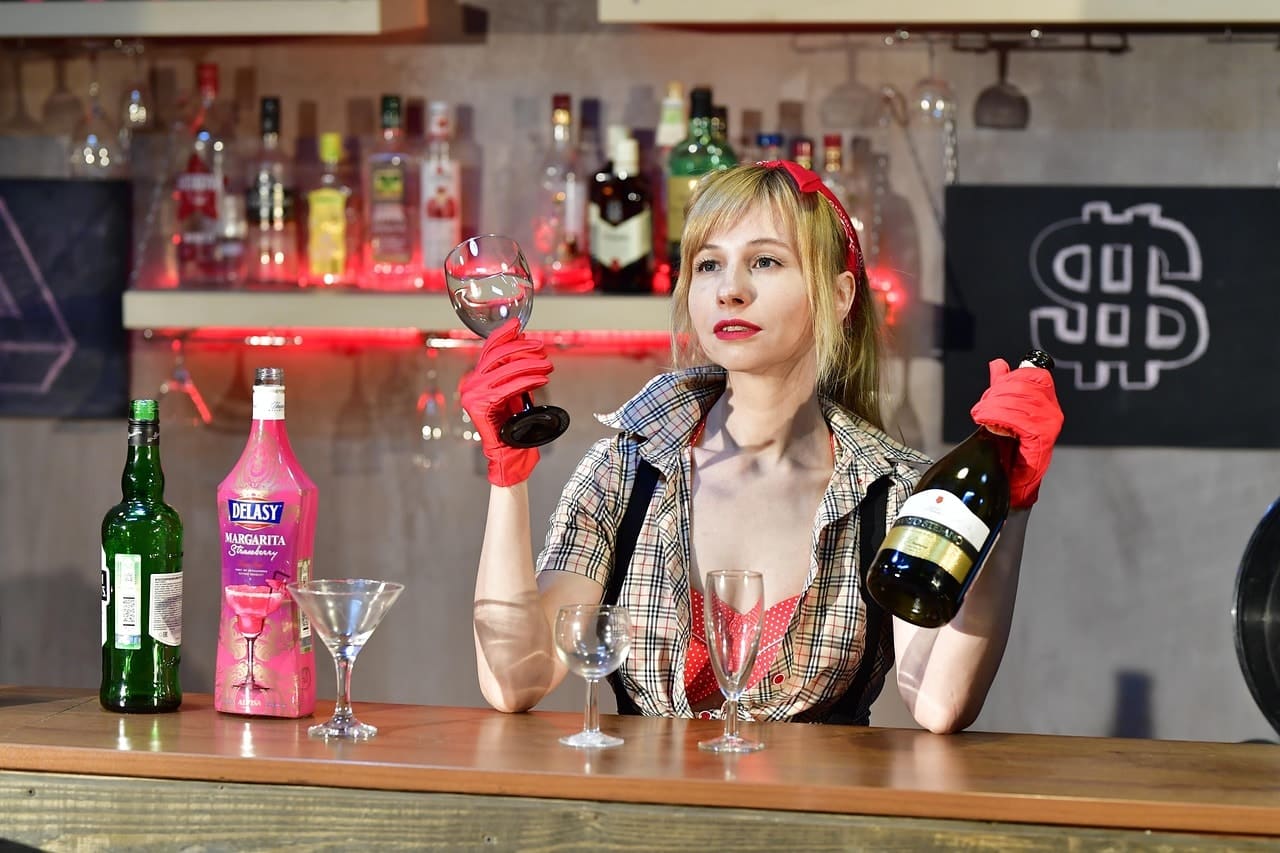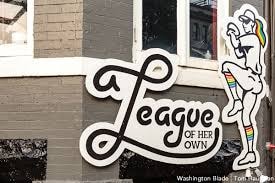

Let’s talk about lesbian bars. If you’re lucky enough to have one of these increasingly rare treasures in your neighborhood, then you know these welcoming spots are a second home for many queer women. You may not know that lesbian bars have a deep, social, cultural, and historical significance. Lesbian bars are so much more than a place for lesbians to drink and socialize with other women.
From Hidden to Historic – The First Lesbian bars in The U.S.

Both gay bars and lesbian bars have a long and interesting history in the U.S. The story of these spaces reflects evolving attitudes, political trends, and the constant presence of resistance.
Early Queer Spaces in The Shadows
Before the term lesbian bar was part of the public’s vocabulary, early gay and lesbian bars existed in secret. They were hidden from mainstream society. These were queer spaces where likeminded folks could exist authentically, socialize, and organize in a hostile world.
During the Prohibition when alcohol was illegal in the United States from 1920 to 1933, speakeasies flourished. This gave gay men and lesbian women a kind of protection. All drinking establishments were illegal. Thus the line between criminality was blurred. In a dimly lit dance hall or secret room, queer couples could find privacy. After all, who would risk drawing the wrong kind of attention by raising hell over the presence of a gay or lesbian couple.
The secrecy of speakeasies wasn’t just about dodging liquor laws. It was an essential line of protection against legal and social persecution. At the time, homosexuality was a criminal offense. Simply being seen holding hands with other women or wearing masculine closing could make someone a target for violence or arrest.
Masculine women were particularly vulnerable. So were tans women, and folks who were gender nonconforming. Many early, lesbian specific bars were hidden within larger gay bars that primarily catered to gay men. This provided some safety and solidarity. However, women were often marginalized even within these communal LGBT bars.
Despite the risk of police raids or violence, these early hidden venues became respites for the queer community. More than places to have a drink, they were some of the only spaces in which queer women could meet others to dance, drink, flirt, and exist authentically. These hidden bars laid the foundation for the future of lesbian bar culture, even if nobody called them lesbian only bars.
Gateways Club And The Birth of The First Lesbian Bars

One of the the earliest, openly lesbian bars was Gateways Club in the Chelsea neighborhood of London. It opened in the 1930s and didn’t close until 1985. While it wasn’t in the U.S. it’s legacy is an important part of lesbian culture worldwide. It was known for its iconic green door, and was even featured in a few songs. Gateways was an escape for lesbian women, including American tourists and expats. The women who patronized Gateways experienced a sense of freedom. It was even popular enough to be featured in the film, The Killing of Sister George.
Back in America, lesbian bar culture began to form in major cities like San Fancisco, New Orleans, and New York City. Mona’s 440 club was one of the earliest, popular lesbian bars in the United States. It opened in San Francisco’s North Beach in the 1930s. At Mona’s only women provided entertainment. Many pushed boundaries fo gender expression by dressing in tuxedos. This wasn’t just a bold fashion choice. It was a radical one when women could be arrested for wearing men’s clothing. Mona’s was more than a lesbian friendly spot. It was the only lesbian bar in the city, and one of the first spaces where lesbians could exist somewhat openly.
Other lesbian bars soon followed suit. There was the Baby Face Disco, and dyke bars like the Lexington club. These became a core part of a growing lesbian community by offering social opportunities and serving as informal community centers for queer women. This includes Black lesbians and working-class patrons who had less disposable income than their gay male counterparts.
Sadly there are only a few remaining lesbian bars in the US. This has been caused by gentrification, shifting social patterns, cultural and political hostility, and the rise of online dating. Today, there are very few bars dedicated only to lesbians. In response, the Lesbian Bar Project has worked hard to document and preserve the stories and spaces that remain. Through these efforts, spots like Houston’s Pearl Bar now have a deserved place in recorded history. However, that isn’t the only point of this project. It is also to protect these key pieces of lesbian culture.
These first lesbian bars gave birth to events and more. For example, there was the Calling Card Ladies Ball at Damenklub Violetta another one of Europe’s oldest lesbian bars. Other clubs held dances or allowed women to take part in activities that were considered “men only” in mainstream society – like shooting pool or playing cards. The story of these lesbian specific bars is one of resistance, resilience, and reinvention.
How Lesbian Bars Became Lifelines For Gay Women
Lesbian bars have changed over time, but there’s always been a common thread. They are safe havens for queer women and have played a key role in the gay rights movement.
A Place to be Seen – Gay Women in Public

It isn’t always easy for lesbians or gay men to make social or romantic connections in mainstream hangouts. Most don’t want to risk approaching the wrong person, lest the reaction be rejection at best or violence at worst. That’s to the case at a lesbian nightclub or bar. There women can exist openly and let others know they are available for friendship or something more.
Public sentiment about sexual orientation has evolved over time, and it varies from region to region. Part of the history of lesbian bars is that these places have remained a safe space for women to be authentic, connect with a community, and feel safe while doing so.
Dyke Bar Culture And Its Legacy
What’s the difference between a dyke bar and a lesbian bar? That depends on who you ask. Some use the phrase as a slur to describe any sapphic bar. Others prefer to avoid using the term altogether because of the negative associations. For the rest of the queer community, it’s best to think of it this way.
- Every dyke bar is a lesbian bar
- Not every lesbian bar is a dyke bar
The word dyke has been reclaimed by many lesbian activists who proudly use the term to describe themselves and the places they spend time. While there’s no exact line that divides dyke vs. lesbian bar, both are an important part of lesbian history.
Bars that are designated dyke bars may draw a crowd that is a bit more radical and politically involved. There’s a lot of intersection between folks who identify with the term dyke and other marginalized. groups. Historically, it’s also been a word adopted by queer, working class women.
The Golden Era – When All The Lesbian Bars Were Alive And Thriving
There was a time when the lesbian community had plenty of bars to choose from, and these spaces were thriving.
A Community of Their Own
In their heyday, these bars met a need for lesbian spaces. While there were and are gay bars that welcomed lesbians, the tended to be male dominated. Sapphic women wanted places to gather with other women. Having lesbian or WLW specific bars gave them that.
It’s also important to distinguish between lesbian bars vs. LGBTQ+ bars. Many lesbians love spending time at the latter. A queer bar is a great spot for interacting, socializing, dancing, even organizing with folks across the LGBTQ+ spectrum. There are also bars for gay men that welcome sapphic women. However, from the first lesbian bars to the few spots left today, lesbian bars remain unique spots designed specifically to give WLW space to be authentic and connect with others.
Resistance And Resilience in The 1970s And 1980s
There’s a reason why third spaces are key to the survival of marginalized communities. Queer folks need places where they can be themselves in the company of others with shared experiences. Lesbian bars have also been at the center of community building and resistance.
How Lesbian Bars Played a Role in Feminist And LGBTQ+ Movements
In the seventies and eighties, lesbian bars offered more than just exciting nightlife. They were also political hubs that were central to the rise and expansion of femist and LGBTQ+ movements at the time. As lesbians became more visible in LGBTQ+ spaces, bars that were just for them didn’t just offer sanctuary. They were places in which they could safely organize among people they could trust.
Whether they were women tucked away in a bar in New Orleans for the purpose of mutual aid, or in San Francisco planning a city-wide protest, these bars were often the unofficial headquarters for resistance movements and activism around women’s health and anti-discrimination efforts.
Many bar owners provided support by intentionally curating spaces where only women were made welcome. This created zones of solidarity that built the trust required for effective resistance and planning. By offering both meeting spaces and amenities like dance floors or pool rooms, proprietors found a balance between creating a space for socialization and organization.
Lesbian bars have survived societal pushback that has ranged in severity from public disapproval and shunning to police raids. They challenged mainstream notions about gender, power, and identity both by their existence and the political organizing that occurred inside their walls.
Today, some of these spaces are recognized as part of efforts by the National Park Service to honor LGBTQ+ sites of historical significance. This proves these were not and are not just watering holes. They fostered queer visibility, furthered feminist thought and were center to late 20th century resistance movements.
Lesbian Bars And HIV/AIDS Crisis Activism
When the AIDS epidemic struck in the early 1980s, lesbian bars played an important role in the response. This crisis disproportionately affected gay men, but lesbians and trans women acted in solidarity. These bars in cities like San Francisco, Washington D.C., and New York City became planning centers for mutual aid, political action, and raising awareness.
Sapphic women who often became caregivers for sick and dying gay men used lesbian bars as places of respite, fundraising efforts, and information sharing. Collection jars were often passed to raise money for both medical care and funeral expenses. In back rooms, women gathered to create strategy to ensure housing rights, launch safe sex campaigns, and educate the public.
The Last Lesbian Bar? The Fight to Keep Lesbian Bars Alive

.Where have all the lesbian bars gone? In the past decade or so, many communities have lost their only lesbian bars. So, why are their so few bars that cater exclusively to WLW?
Disappearing Third Spaces For The LGBTQ+ Community
There are economic, technological, and social shifts that have led to the closures of bars for WLW. For one, third spaces in general are dwindling. Communities aren’t investing in these spaces, and gentrification of queer neighborhoods has led to the closure of many of these spaces.
Dating apps also play a part. People who are looking to partner up are more likely than ever to choose technology over going out.
Modern Preservation Efforts
The lesbian bar project was formed as effort to support, draw awareness to, and celebrate lesbian bars in major cities like San Francisco, New York City’s Greenwich Village, and across the U.S. The project has raised hundreds of thousands of dollars to keep the remaining sapphic bars alive while ensuring that history doesn’t forget the first lesbian bars that predate World War II.
Why It’s Important to Memorialize The First Lesbian Bars
There’s no denying the social and historical significance of the first lesbian bars and the ones that followed after. They have played a role in queer as well as civil rights movements over time.
It isn’t important to simply document early lesbian bars. It’s important to capture the good and bad. That includes lesbian bars being used as political and social targets, the impacts of economic changes and major events (e.g. Covid), and not always successful efforts at intersectionality. For example, just as the femimist movement was largely dominated by white women, so were many lesbian bars during that time period. That Black lesbians, working class lesbians, and other groups had to forge their own spaces
5. Beyond the Bar: How Gay and Lesbian Bars Changed Queer Culture
Bars that offer space and connection to the LGBTQ+ community have been change agents in queer culture. They have given folks of any sexual orientation a place to belong.
Lesbian Bars And Art Music And Media
Lesbian gars and other queer-friendly bars have been long intertwined with art and culture. While not every reference has been flattering, for example the trope of a bar full of large and angry lesbians, they are all proof that these places have made an impact. Here are some examples:
- Characteres in The L Word and its reboot frequently spending time in lesbian bars
- The song Cherry Bomb by The Runaways as a lesbian bar anthem
- The NYC lesbian bar “The Ritz” featured in Carol – an adaptation of The Price of Salt
- Le Tigre’s song Dyke Bar that celebrates lesbian spaces
- The Cheers Queers podcast where lesbian bars and other spaces are a frequent topic of discussion
The lesbian bar and nightlife experience is widely seen as a rite of passage. That’s also reflected in pop culture. For example, Chappell Roan’s Pink Pony Club is a semi-autobiographical account of the beginning of her queerness journey. It was inspired by her first visit to an LGBTQ+ bar in Los Angeles.
New Models For Queer Spaces Today
While bars are an important part of queer culture, there are new social options cropping up today. These reflect a diversity of needs within the community. Today, lesbians and others can find connection and socialization at:
- Lesbian bar pop-ups
- LGBTQ+ community centers
- Queer social events at libraries and universities
- LGBTQ+-Friendly bookstores and cafes
Drinking and partying, sometimes to an unhealthy extent, has long been associated with the queer scene. That doesn’t mean that all queer folks are into that. Many want to enjoy the experience of dancing, or having a drink at the local bar and billiards room. They just don’t want to consume alcohol or drugs. For them, sober bars or bars with NA nights are an important alternative.
Final Thought – Important History And a Hopeful Future
Lesbian bars have always been a place for queer people to build community and enjoy themselves. Hopefully, efforts at drawing attention to these spaces will lead tird o a revival. It’s refreshing to see so many queer third places evolve to meet the needs of young LGBTQ+ community members. Lesbian bars aren’t just a place to drink, they are historical landmarks and cultural centers.





